Tyrannosaurus
Name Origin
Tyrant Lizard
Family
Tyrannosauridae
Classification
Diapsida, Saurischia, Theropoda
Habitat (Discovery Location)
United States, Canada
Period
70 to 66 million years ago (Late Cretaceous)
Length
Approximately 12 meters
Weight
Approximately 4 to 7 tons
Diet
Carnivore (Meat-eater)
 Jurassic
Jurassic
Park / World Featured Dinosaur
Appearance in Jurassic Park
She was introduced as the park's star attraction, a dinosaur that was meant to be a beloved feature, had the park opened successfully. Transported to Isla Nublar in 1989, at the time of the story (1993), she was contained within the "T-Rex Paddock" in the northeast section of the island, where she was fed live goats.
Midway through the film, the park's systems shut down, allowing the T-Rex to break through the unpowered electric fences and escape. She immediately attacked the tour vehicles, Land Cruisers, which were stalled in front of her paddock, carrying Dr. Alan Grant's group. When the mathematician Ian Malcolm acted as a lure to save Tim and Lex (trapped in Land Cruiser 04), she attacked him, inflicting serious injuries. She then discovered the lawyer, Donald Gennaro, hiding in a nearby restroom and devoured him head-first, killing him. Afterward, she pushed the overturned Land Cruiser 04 over a cliff, with Tim still trapped inside. Now free, she began to roam the park at will.
She relentlessly chased Jeep 04, driven by Sattler and Muldoon after they rescued Malcolm. While the real-world running speed of a T-Rex is often estimated at 20-30 km/h, she famously caught up to a Jeep traveling at over 50 km/h in this film, which became a major topic of discussion. In 2020, official Twitter data confirmed the T-Rex's speed as 51 km/h, indicating the Jurassic Park series has consistently maintained the speed established in the first film.
The following day, she continued to do as she pleased, notably appearing from the jungle to catch and eat a Gallimimus from a stampeding herd, right in front of Grant and the children, who were hiding behind a fallen log.
In the film's climax, she appeared seemingly out of nowhere in the Visitor Center, just as Grant's group was cornered and facing certain death from two Velociraptors. She attacked one of the raptors, inadvertently saving the humans. Immediately after, the other Velociraptor ("The Big One") leaped onto her back. Despite being injured, the T-Rex quickly grabbed the raptor in her jaws, slammed it against the nearby T-Rex skeleton, and let out a victorious roar.Appearance in The Lost World: Jurassic Park
The Lost World: Jurassic Park features a family of three Tyrannosaurus—a male, a female, and an infant—that lived on Isla Sorna. Matching the family structure from the original novel, they are nicknamed "Buck" (the male), "Doe" (the female), and "Junior" (the infant). They are entirely separate individuals and have no connection to the T-Rex from Isla Nublar featured in the first Jurassic Park film.
The T-Rex family has significantly more screen time in this film than in the previous one, repeatedly putting the protagonist, Dr. Ian Malcolm, and his team in dire situations. However, they were also the dinosaurs in the film whose fates were most tragically manipulated by human actions.
Early in the story, Junior is injured by humans as part of a ploy to lure the parents. Subsequently, Buck and Junior are captured by an InGen hunter team and transported on the cargo ship S.S. Venture to San Diego.
When the cargo ship arrived at the San Diego port, a horrific scene was discovered: the entire crew was dead. The uncontrolled ship then crashed into the pier. The helmsman on the bridge was found in a gruesome state, devoured by something, leaving only his severed hand. Buck, who was supposed to be tranquilized and sealed within his container, had been set loose inside the cargo hold by an unknown party.
Later, when a security guard inadvertently opened the cargo hold doors, Buck escaped from the ship and ran amok in the streets of San Diego. He caused chaos in the city, attacked the dinosaur hunters in their camp, and devoured a local resident (a cameo by the screenwriter), triggering a panic reminiscent of the T-Rex from the first film.
Ultimately, Dr. Ian Malcolm and his team used Junior as bait to lure Buck back onto the ship. The adult T-Rex was tranquilized once again, and the family was returned to Isla Sorna.Appearance in Jurassic Park III
This individual inhabited Isla Sorna and is officially considered a separate animal from the family (Buck, Doe, and Junior) featured in The Lost World: Jurassic Park.
This Tyrannosaurus is characterized as a young, sub-adult male. Compared to the adults in the previous film, it is slightly smaller in stature and has a paler coloration.
In the film, it is first encountered by Dr. Alan Grant's group while it is feeding on a kill. It chases them through the jungle but quickly confronts the film's new "signature dinosaur," the Spinosaurus, triggering a battle between the two apex predators.
In the initial moments of the fight, the T-Rex appears to have the upper hand, pushing the Spinosaurus back. However, the Spinosaurus exploits a brief opening, biting the T-Rex's neck with its powerful jaws. The Spinosaurus then uses its strong arms to snap the T-Rex's neck, killing it.
This plot twist, to put it bluntly, was a "sacrificial lamb" appearance, designed solely to establish the Spinosaurus as the superior threat. The T-Rex's total screen time in the 90-minute film ends after this scene, lasting only 90 seconds.
The shocking defeat of the T-Rex, the very symbol of the franchise, drew intense backlash and anger from a portion of the fanbase. It is said that the later clarification that this individual was a sub-adult (not fully grown) helped to somewhat appease the fan outrage over this shocking turn of events.
Today, the prevailing scientific consensus is that Spinosaurus was primarily piscivorous (fish-eating) and had a body structure ill-suited for fighting large dinosaurs on land. However, at the time the film was produced, the (now outdated) theory that Spinosaurus was a powerful terrestrial hunter, equal or superior to T-Rex, was popular, and this scientific background heavily influenced the creation of the fight scene.
Notably, the droppings of the Spinosaurus—which presumably contain the remains of this T-Rex—play a surprisingly crucial role later in the film.Appearance in Jurassic World
She is the most famous large carnivorous dinosaur representing Jurassic World. The individual featured in this film is the exact same female Tyrannosaurus rex from the first Jurassic Park, known affectionately by fans as "Rexy." The scars on her neck, inflicted during the battle with the Velociraptors at the end of the first film, are still clearly visible.
Rexy, who was once held in the original Jurassic Park, survived on the island for decades, living wild after the park's collapse. Born in 1988, she was recaptured by Hoskins' unit around the time Jurassic World was built and is now kept as the sole Tyrannosaurus in the park's main attraction, "T-Rex Kingdom."
She is seen in the trailers and early in the film as part of the "T-Rex feeding show" attraction, where she consumes a goat. However, as the film's main plot shifts to Owen, the four raptor sisters, and the escape of the Indominus rex, her screen time ends for a while.
Then, during the film's climax, the moment fans had been waiting for finally arrives. Facing the threat of the Indominus rex, Claire, realizing they "need more teeth," releases Rexy from her paddock as the ultimate "trump card." Rexy makes a dramatic entrance, smashing through the Spinosaurus skeleton, and stands before the Indominus rex.
The battle between the old and new apex predators begins, and Rexy initially overpowers the Indominus with her sheer bite force and power. However, as the fight progresses, she becomes exhausted and is forced onto the defensive by the Indominus, which is superior in intelligence and possesses powerful arms, pushing Rexy into a seemingly hopeless situation.
Just then, the Velociraptor "Blue" intervenes, attacking the Indominus and turning the tide of the battle. With Blue's help, Rexy regains her footing and goes on the offensive, backing the Indominus to the edge of the Mosasaurus lagoon.
Ultimately, the Indominus is grabbed by the Mosasaurus as it leaps from the lagoon, ending the fight. Rexy exchanges a look with Blue, who is standing nearby, and quietly walks away without attacking her.
After the island falls to the dinosaurs, she is seen looking over the ruins of the park, letting out a massive roar toward the sky—a roar symbolizing both her reclaimed freedom and a warning to humanity.
As trivia, in Phil Tippett's storyboards for the first film, she was originally named "Roberta." According to the official website, she has a tooth count of 50 to 60 teeth.Appearance in Jurassic World: Fallen Kingdom
She is the "Queen" of Isla Nublar and the park's largest carnivorous dinosaur. Characterized by her massive head, powerful jaws, ferocious temperament, and tiny arms, she remains a vital "face" of the franchise in this film.
The individual appearing in this movie is the same female that starred in the original Jurassic Park and the previous film, Jurassic World (the fourth installment). After the park's collapse, she survived on Isla Nublar, reigning at the pinnacle of the island's ecosystem. She is affectionately known by fans as "Rexy." (Note: While storyboards for the first film listed her name as "Roberta," it is unclear if this setting is still officially maintained.)
She has a personality that shows no mercy to intruders in her territory, and she is responsible for driving many other carnivorous dinosaurs—who were released from the park and incurred her wrath—back into extinction.
She is the first dinosaur to be fully revealed on screen in this film. Harboring a dislike for humans, she attacks the mercenary team sent by the Lockwood Foundation to retrieve the bones of the Indominus rex from the lagoon. While none of the mercenaries were killed by her during this specific encounter, the ensuing chase damaged the lagoon's gate control system, inadvertently causing the escape of the Mosasaurus.
Later, as the volcanic eruption looms, she ambush-attacks a Carnotaurus that is threatening Owen’s group, knocking it out with a single blow and inadvertently saving the humans' lives.
However, while fleeing the eruption, she is tranquilized and captured by the mercenaries. She is caged and transported to the "Lockwood Estate" on the U.S. mainland. In the estate's basement, she is shown relishing a live goat, her favorite food (it seems she does not have a particular taste for human meat).
In the film's climax, after being released along with the other dinosaurs by Maisie, she uses her powerful jaws to devour Eli Mills, the mastermind behind the film's events. In the process, she headbutts away a Carnotaurus attempting to scavenge the kill and tramples the bones of the Indominus rex—a symbolic crushing of her old rival—before disappearing into the forest.
In the final scene, she is shown breaking into a zoo or safari park enclosure. She faces off against a male lion, and the two roar at each other, creating a symbolic image of the ancient and modern kings standing side by side.Appearance in Jurassic World: Dominion
She is the main dinosaur of this film and the absolute "face" of the series, having appeared in the 1st, 4th, and 5th installments. She is a female Tyrannosaurus affectionately known by fans as "Rexy."
Born in 1988, she is an elderly individual at 34 years old and is likely the last female Tyrannosaurus on Earth. She possesses high intelligence and a sense of reason. Perhaps remembering how Blue (Velociraptor) helped her during the battle against the Indominus rex in Jurassic World, she appears to recognize Owen and his group when they are with Blue. She is depicted as generally harmless to humans unless she takes a specific dislike to them.
In the film's prologue (set in prehistoric times), a Tyrannosaurus that can be considered Rexy's genetic ancestor appears. Depicted with feather-like filaments on its body, this original individual loses a one-on-one duel with a Giganotosaurus and dies. This implies that even among the modern clones, the Giganotosaurus holds the advantage in terms of raw power.
After the events of the previous film, she was hiding in the forests of the Sierra Nevada mountains. After wandering into a drive-in theater, she was captured by the U.S. Fish and Wildlife Service. She was then transported to the "Biosyn Sanctuary" in Italy, where the Biosyn headquarters is located, and allowed to roam freely with other dinosaurs.
In the film, she inhabited the sanctuary's sequoia forest but confronted her ancestral rival, the Giganotosaurus, over a deer carcass. However, she was overpowered and forced to retreat.
Later, fleeing a forest fire caused by flaming giant locusts, she evacuated to the Biosyn Valley (the central plaza of the donut-shaped facility). There, she faced the Giganotosaurus once again. As if settling a grudge millions of years in the making, the final battle began.
Rexy launched repeated attacks but was beaten back every time. She was eventually overpowered and appeared to be killed.
However, thanks to Kayla's quick thinking, the Giganotosaurus was lured into fighting a Therizinosaurus that happened to be nearby. While the Therizinosaurus fought back, Rexy revived. Seizing the moment when the Giganotosaurus was distracted, she bit onto its neck. Finally, she pushed the Giganotosaurus into the Therizinosaurus's long claws, impaling it and defeating her fated rival. After the battle, Rexy let out a roar of victory alongside the Therizinosaurus.
At the end of the story, outside the valley, she encounters two Tyrannosaurs—the former rulers of Isla Sorna from The Lost World: Jurassic Park. The green individual is the male "Buck," and the brown one is the female "Doe." Her role in the film concludes with this scene of her finally reuniting with her own kind.Appearance in Jurassic World: Rebirth
The Tyrannosaurus featured in this title differs significantly from the individuals seen in the series so far (such as Rexy). Created on the island in the past, this individual is distinguished by a unique coloration featuring a base of black and gray stripes.
Due to its immense size and commanding presence, it has been officially dubbed "Ember" and is depicted as a formidable new threat.
Its first appearance in the story is marked by a striking contrast between stillness and motion. Initially, it is shown napping leisurely alongside the carcass of a Parasaurolophus it had hunted.
However, the situation shifts dramatically when the Delgado family, attempting to raft down the river, passes by. Awakening instantly upon spotting them, Ember launches a relentless assault on the family.
This attack sequence features a significant directorial choice that is sure to thrill longtime fans: the depiction of the Tyrannosaurus swimming through the river like a crocodile in pursuit of its prey.
In fact, this "swimming T. Rex" is a famous sequence from Michael Crichton's original Jurassic Park novel.
During the production of the very first Jurassic Park film, this scene was abandoned because it was deemed "too difficult to visualize with the technology of the time." In other words, the swimming scene in this installment is a historic homage, realized thirty years later thanks to advancements in technology.
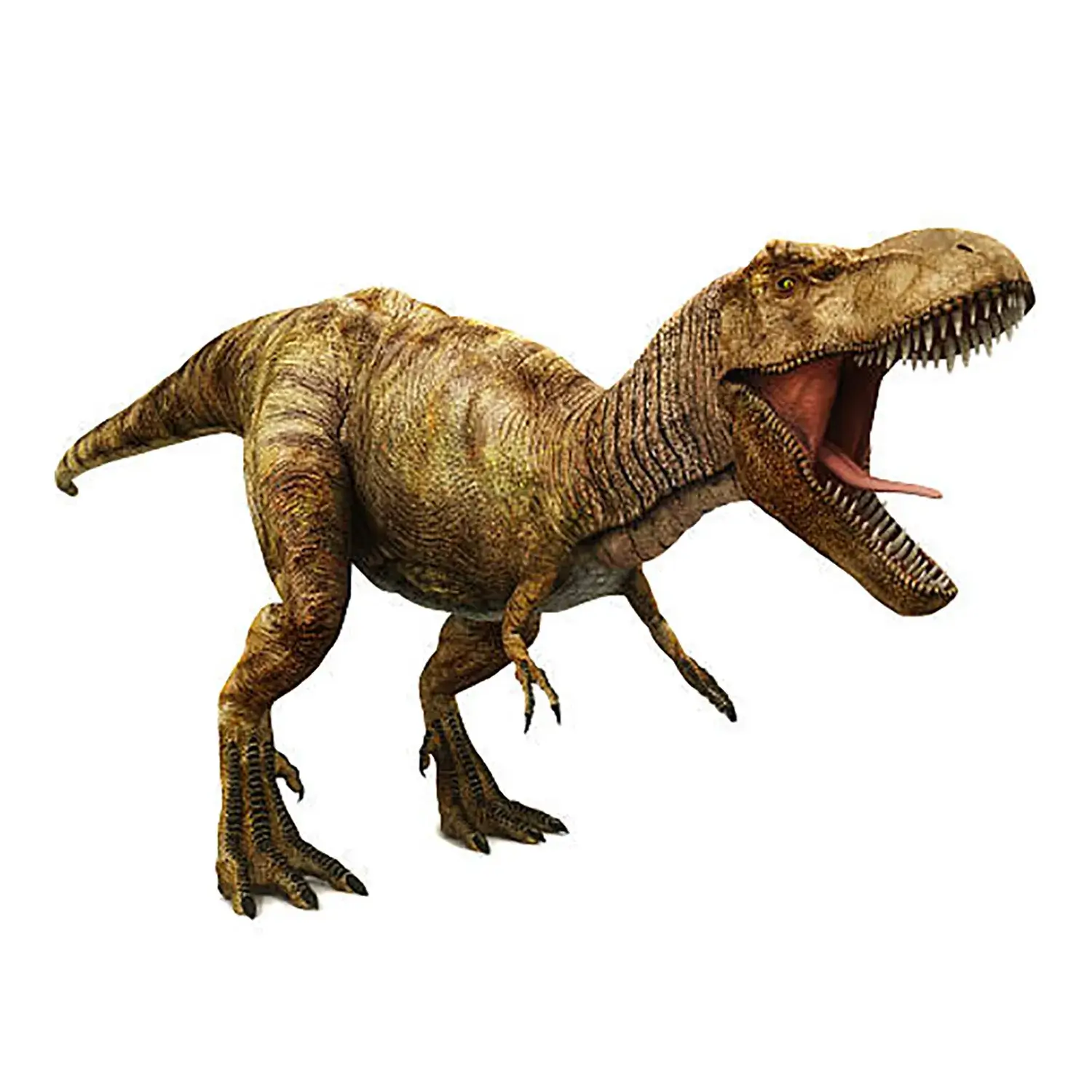



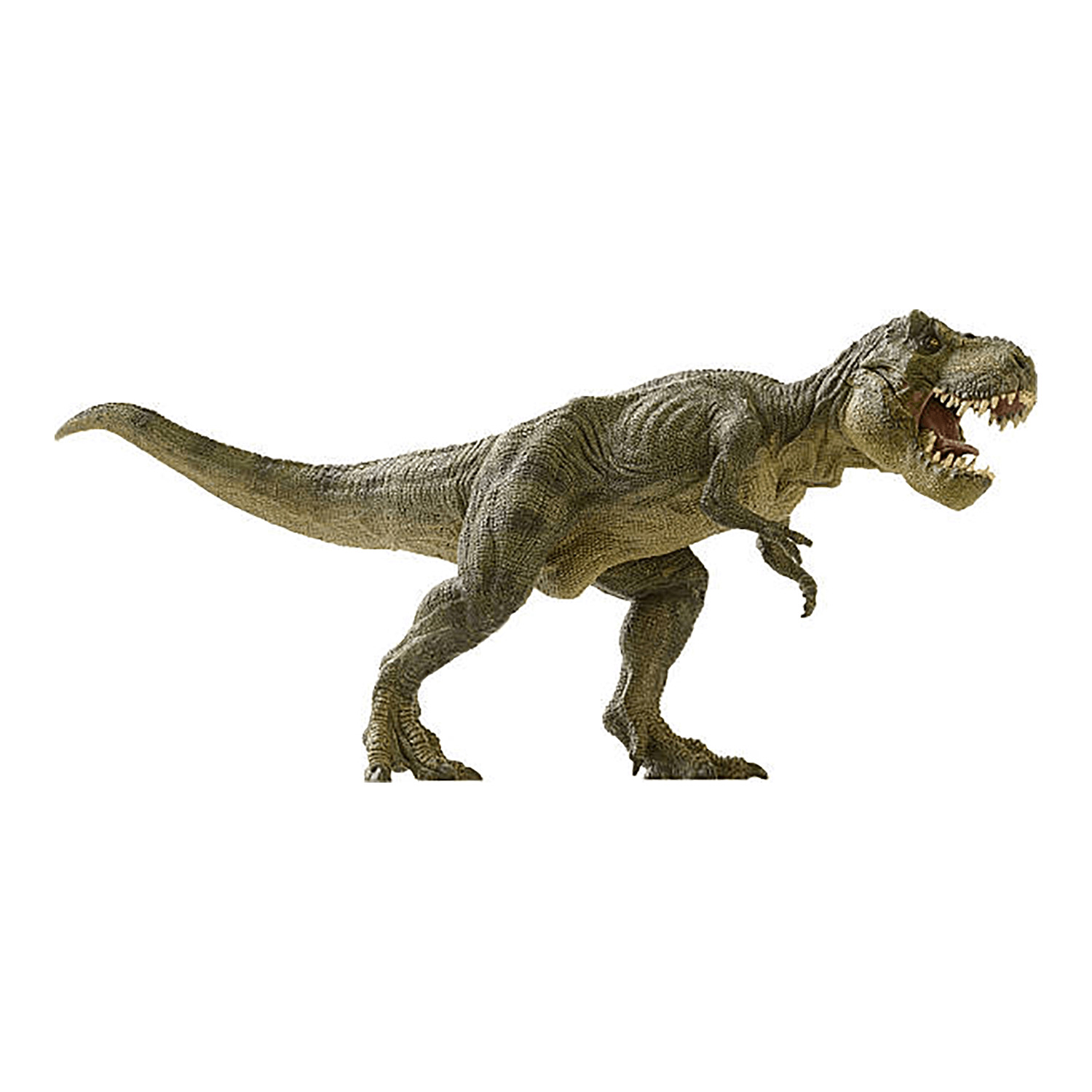
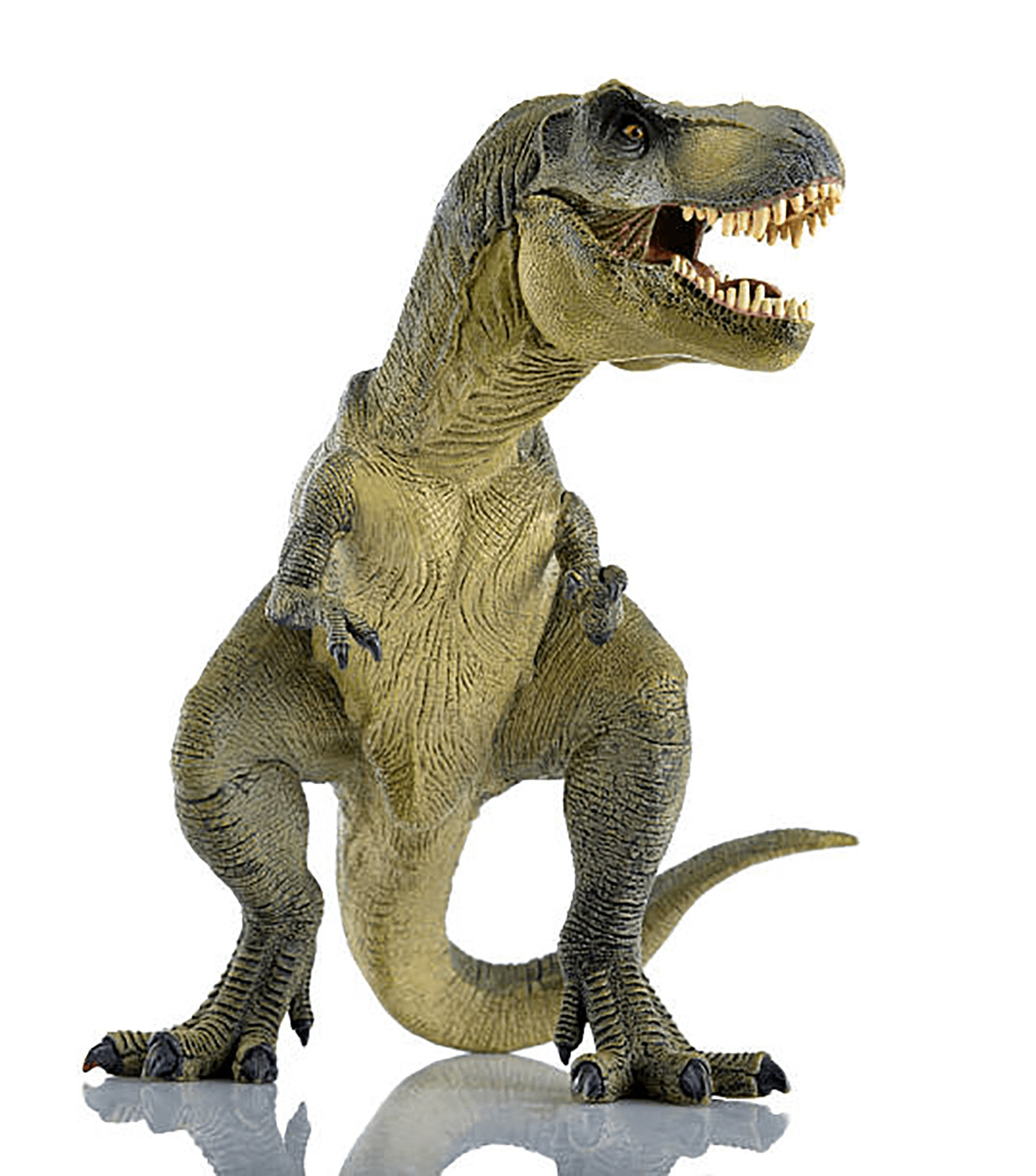
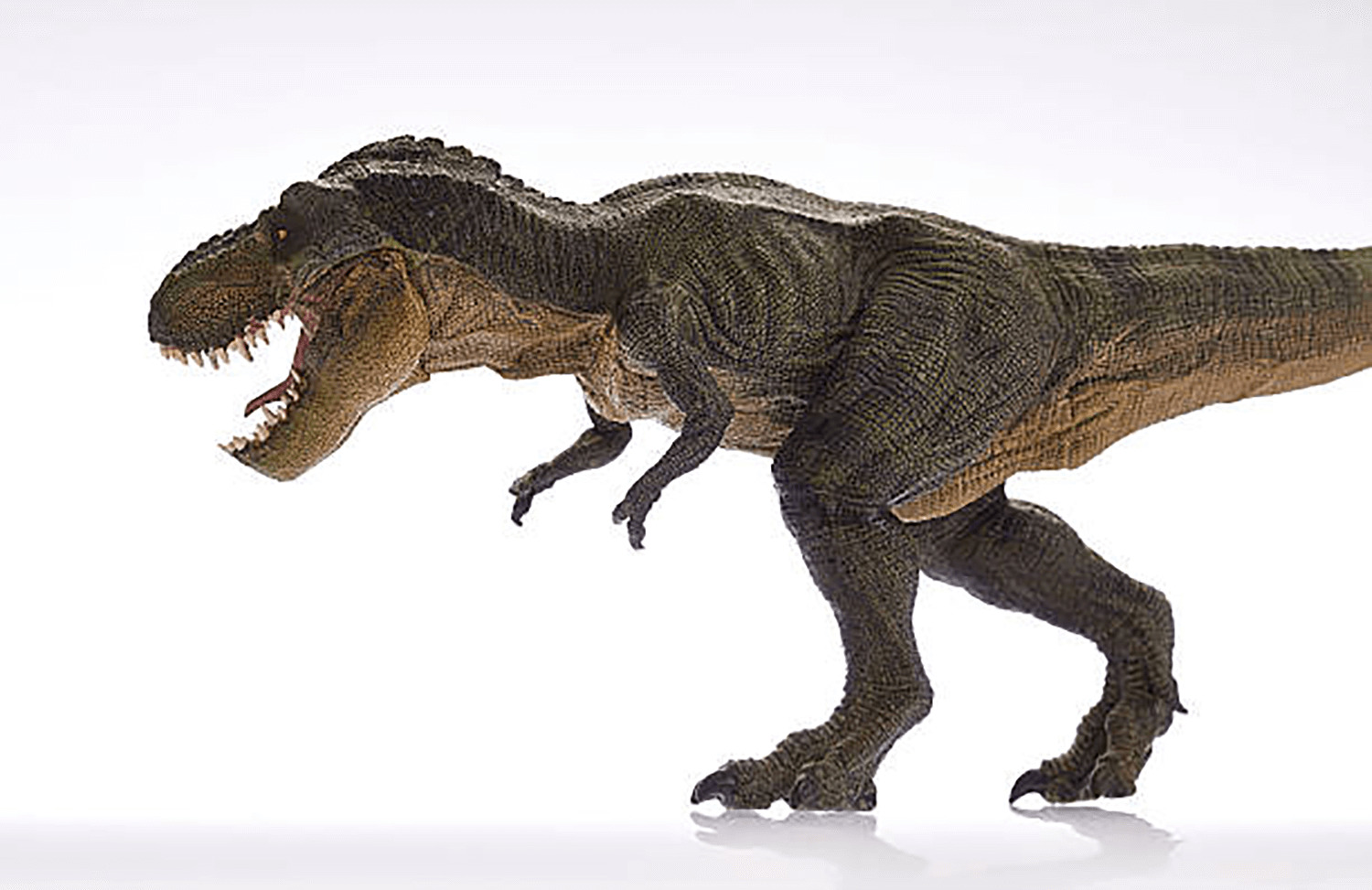
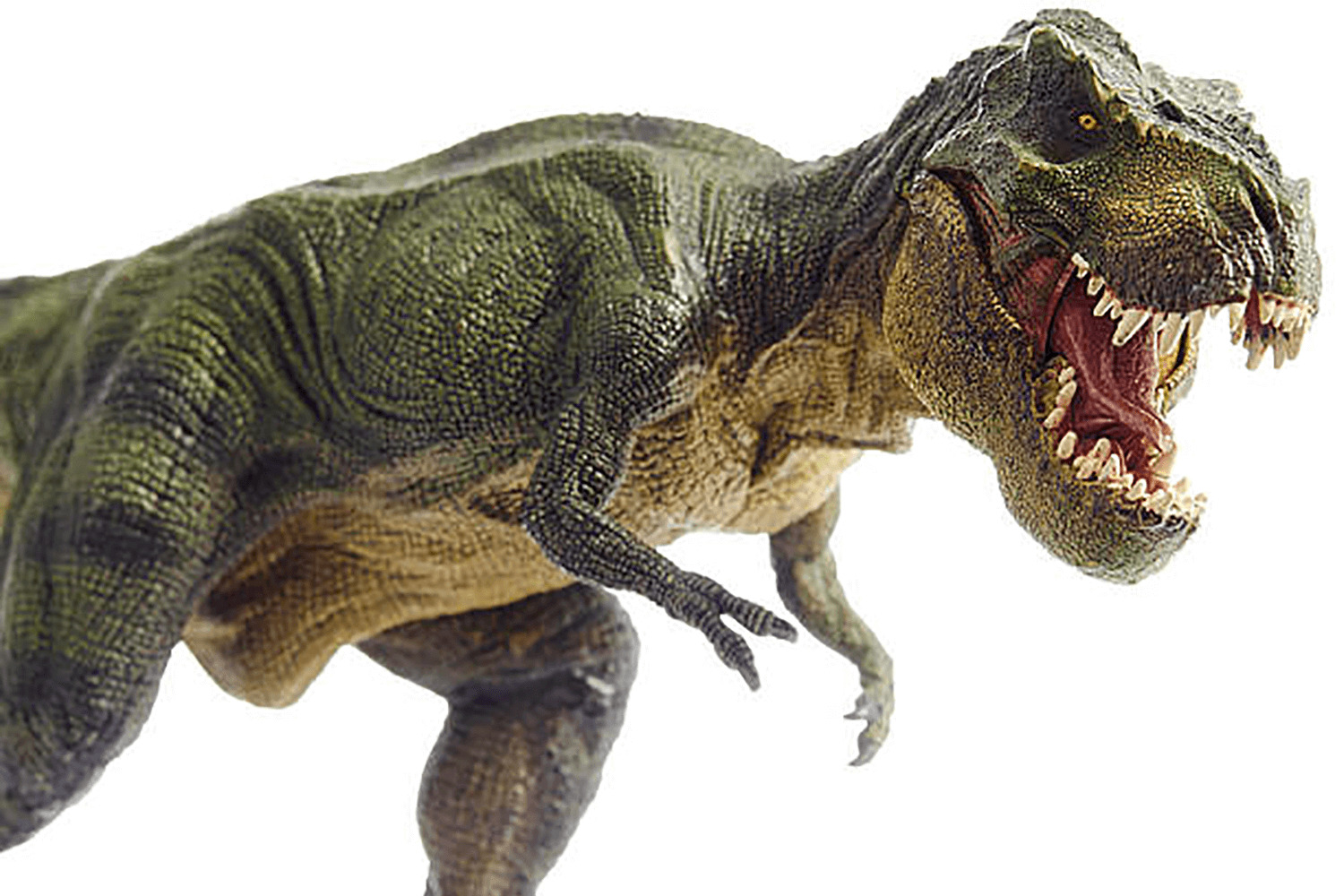
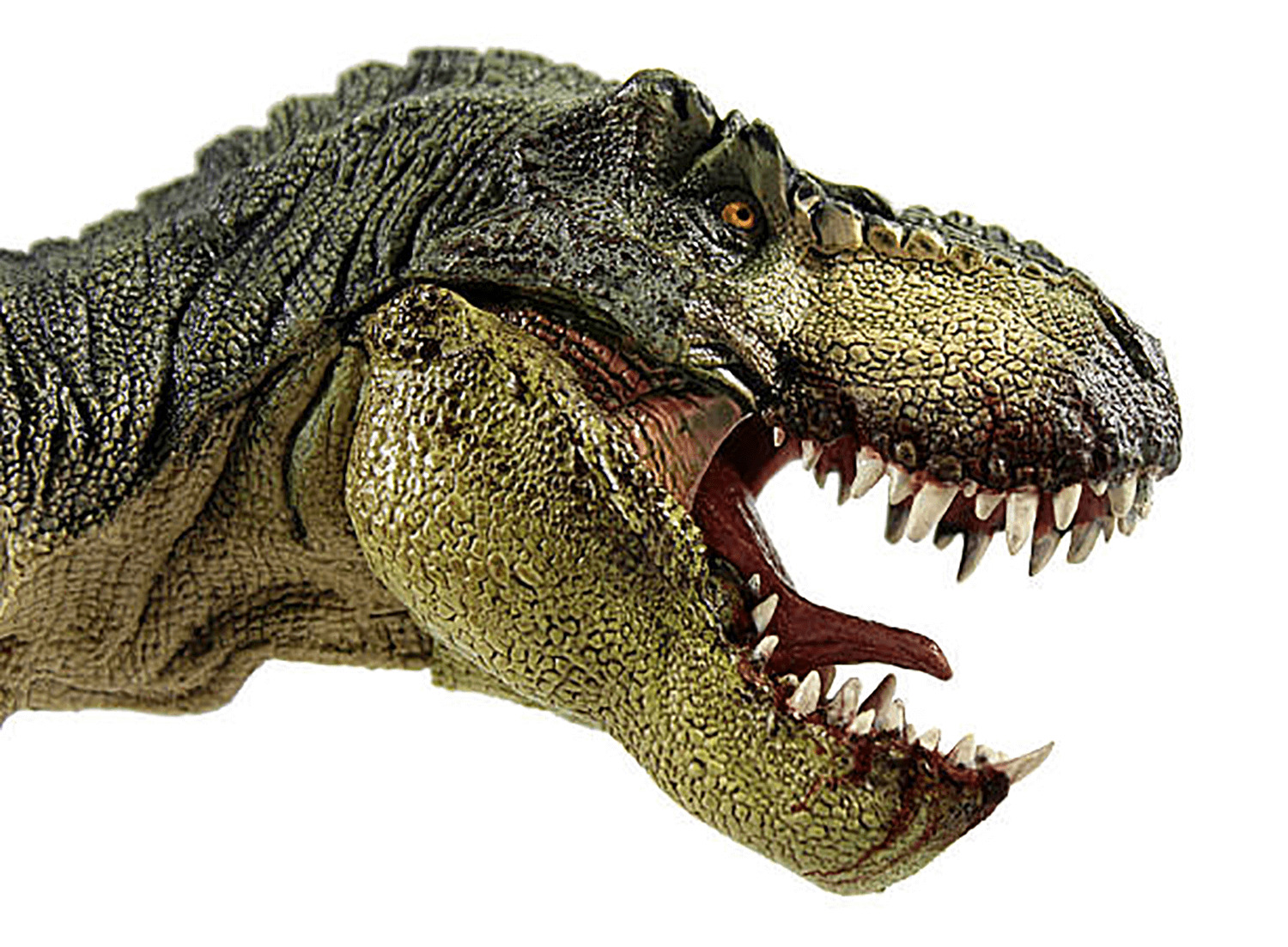

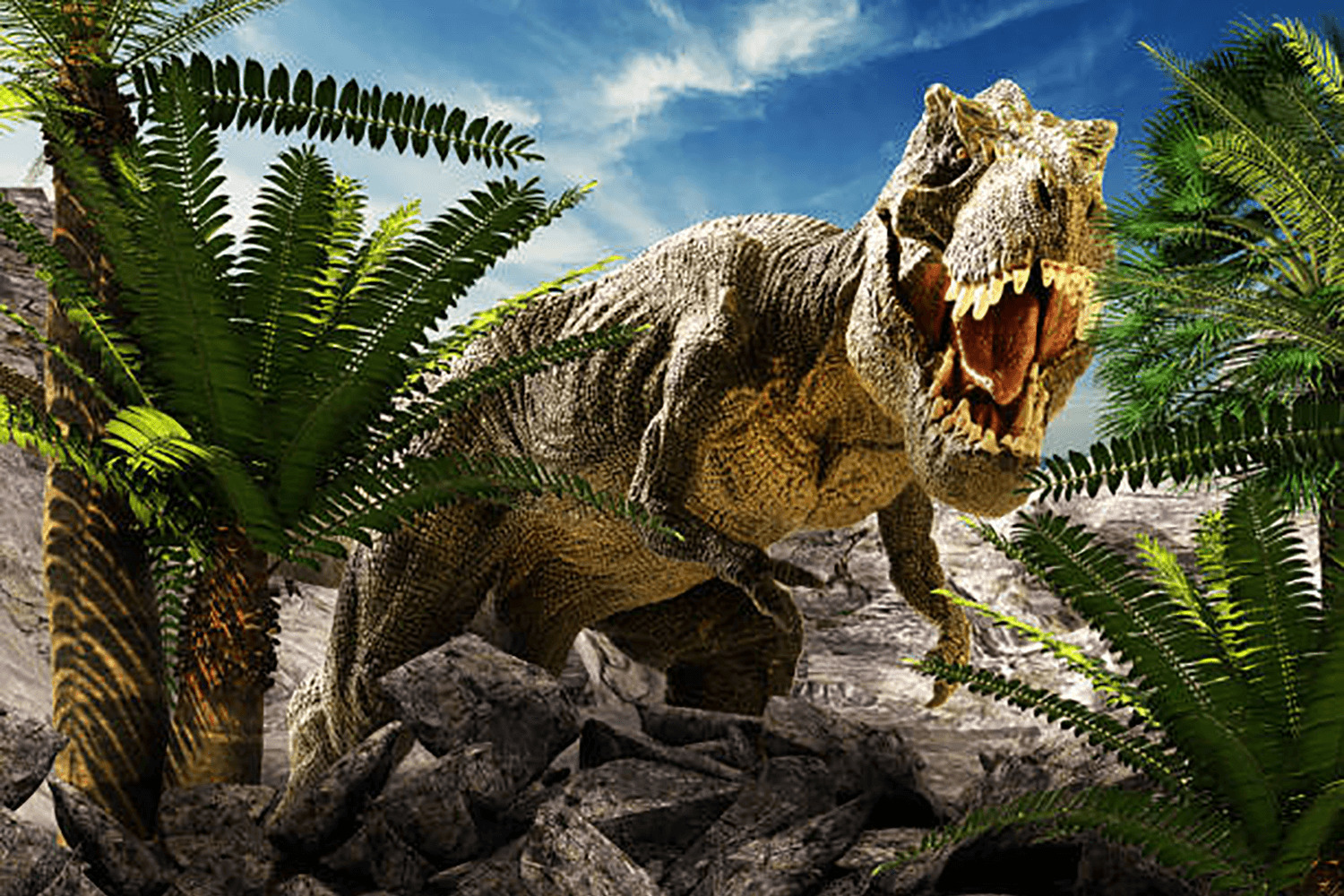

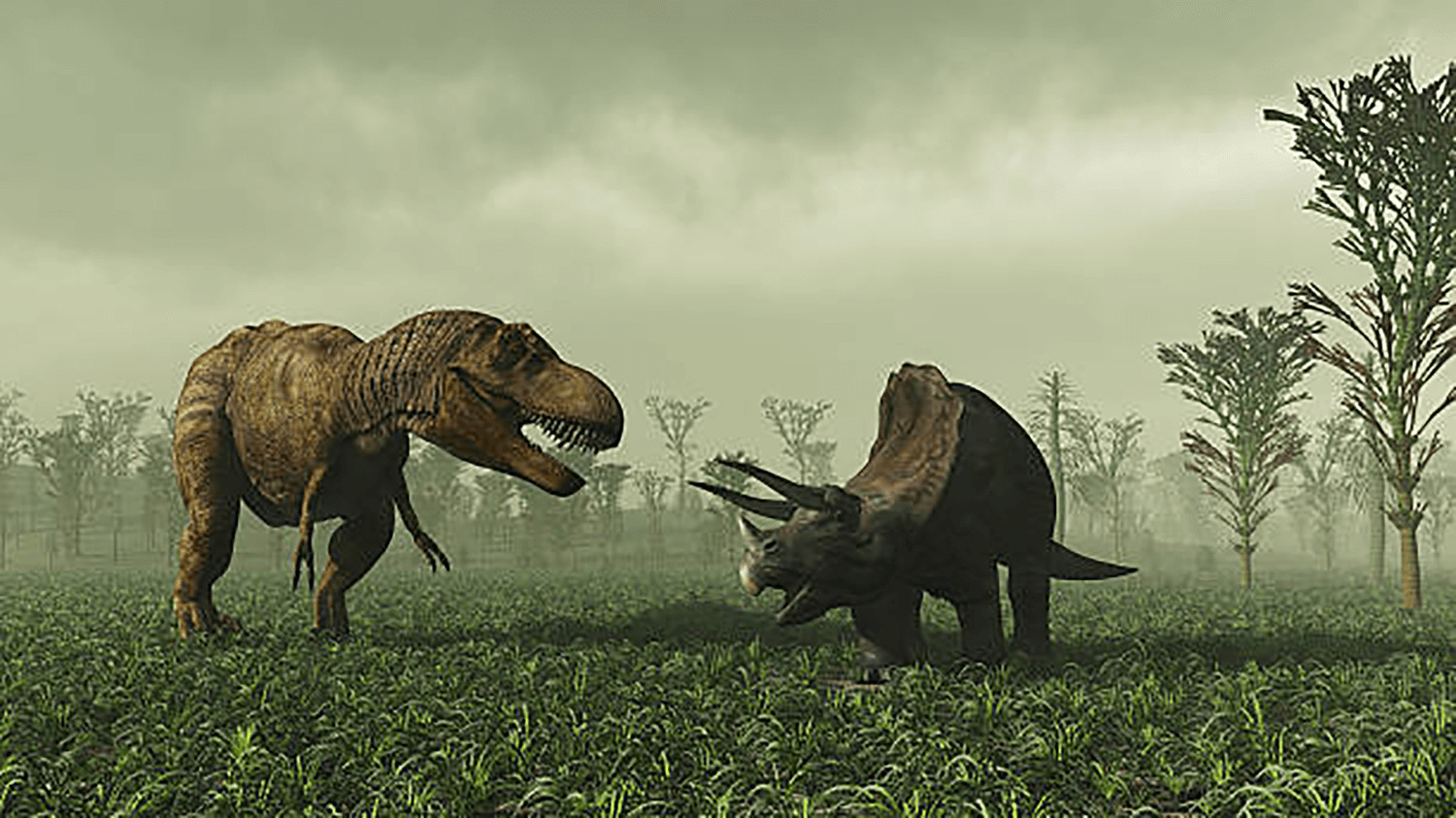
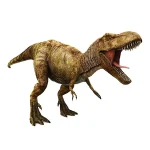
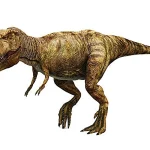
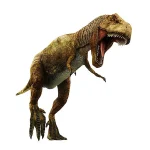
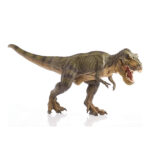
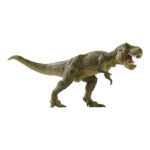
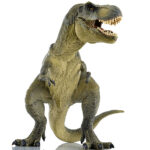

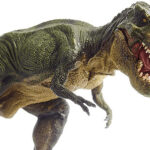
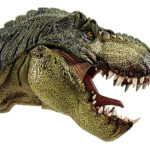
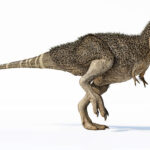
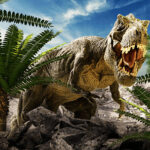


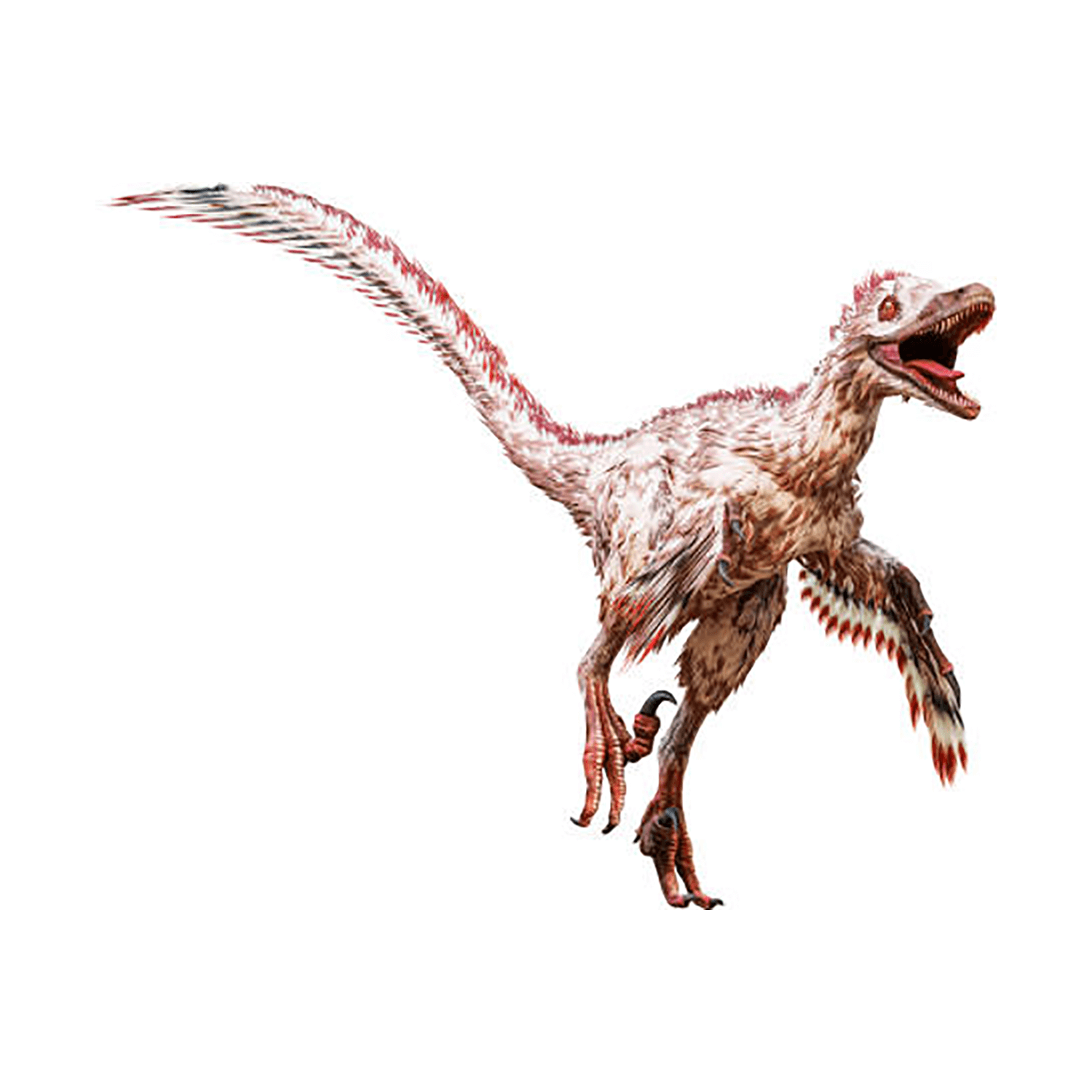
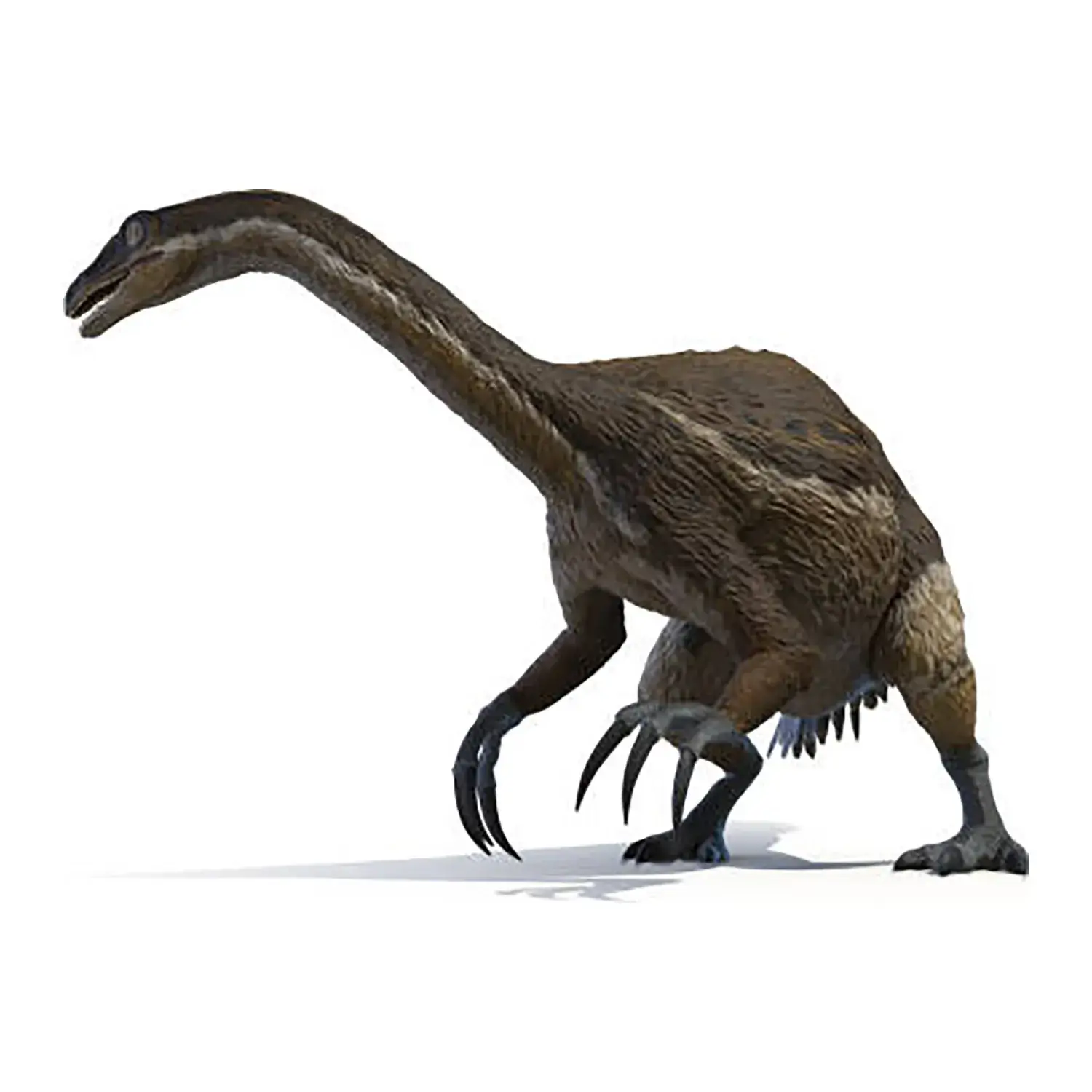
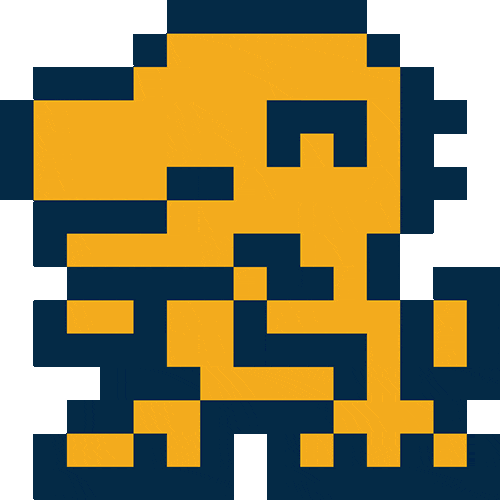



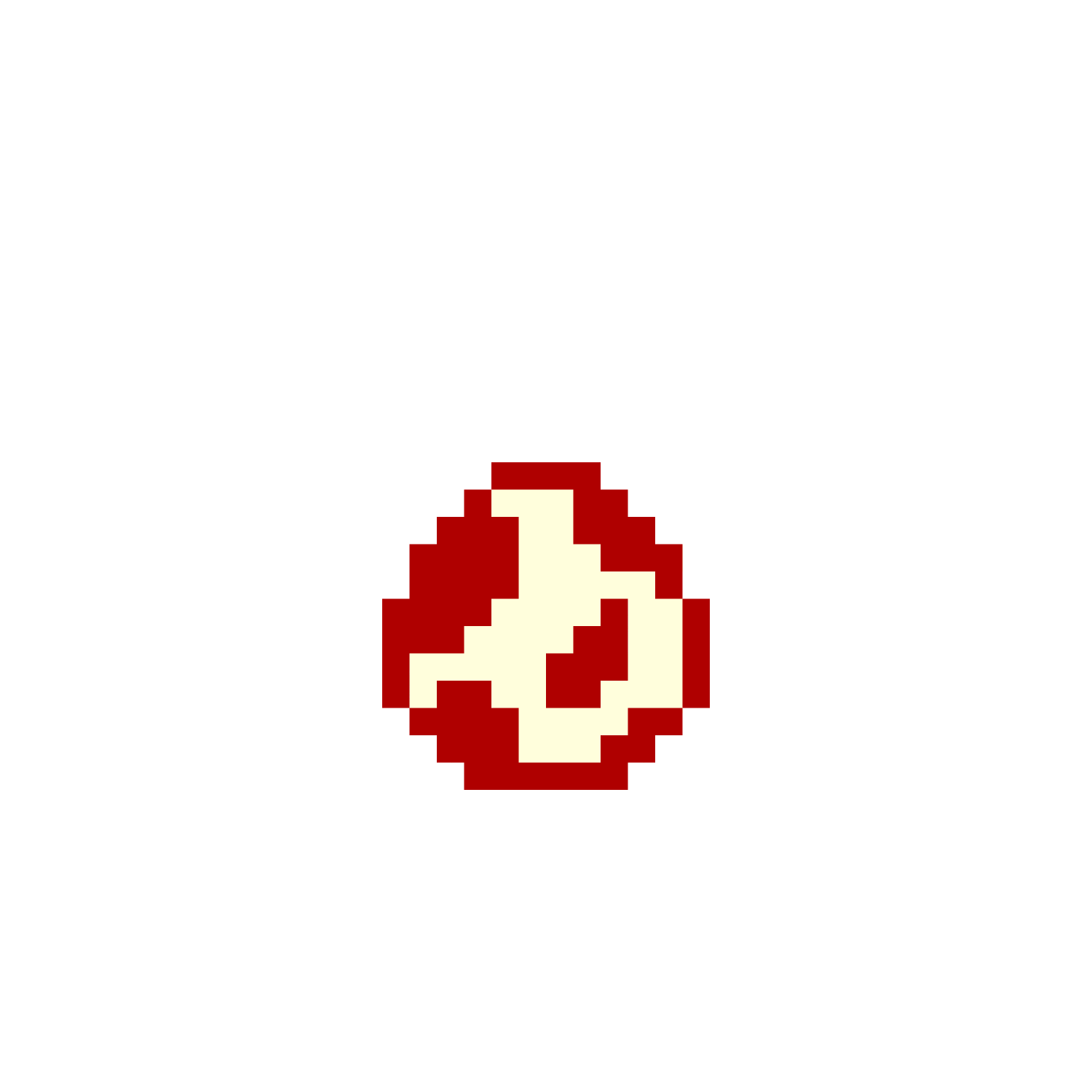
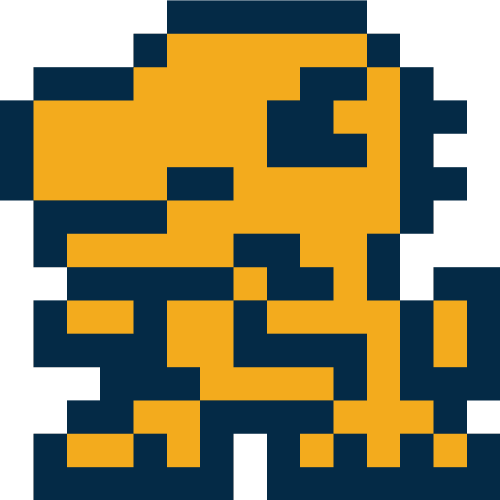
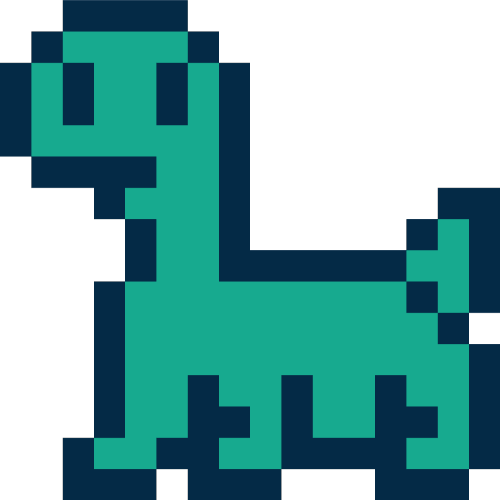
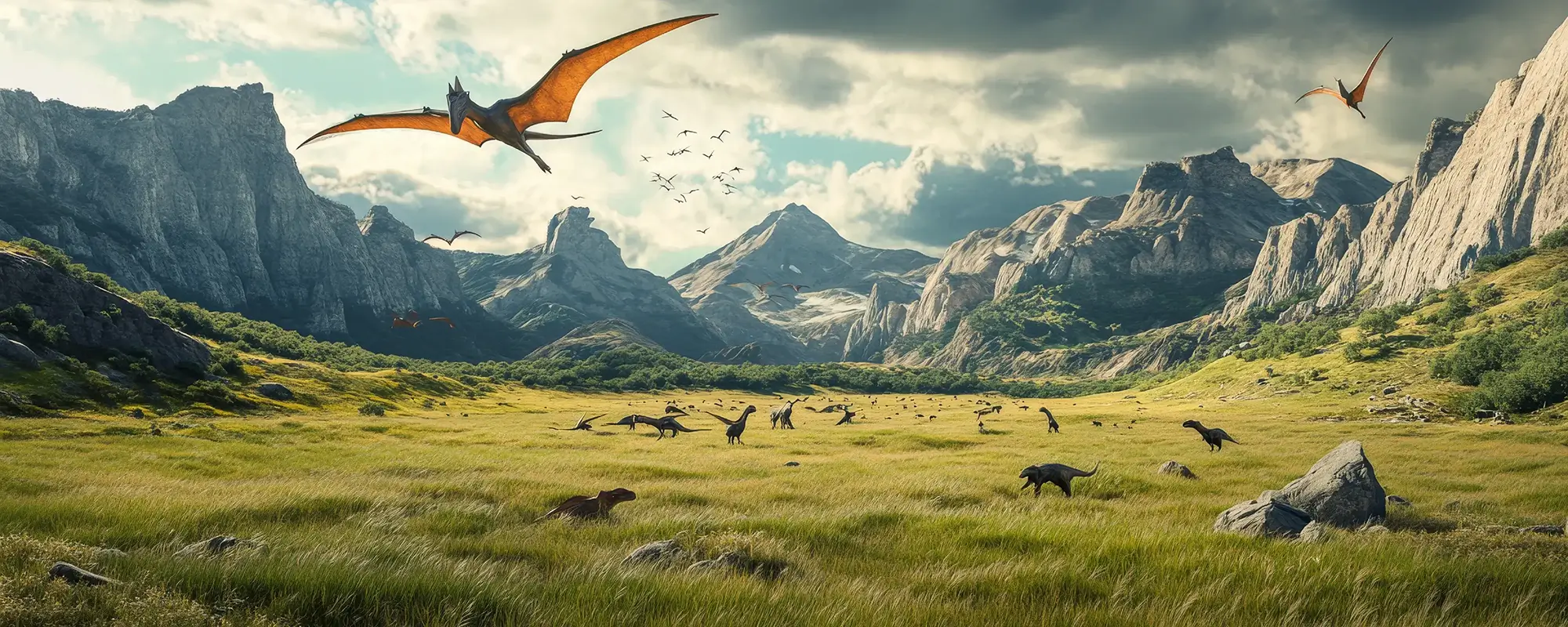
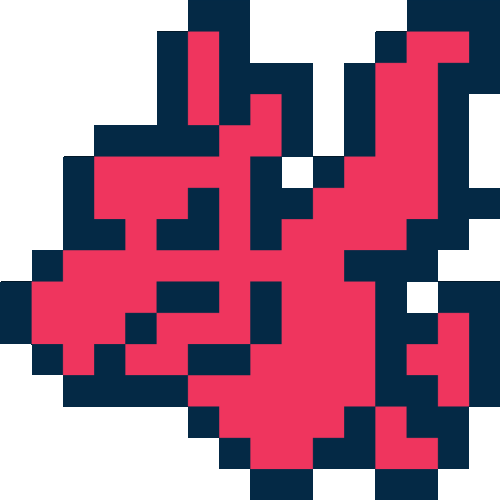

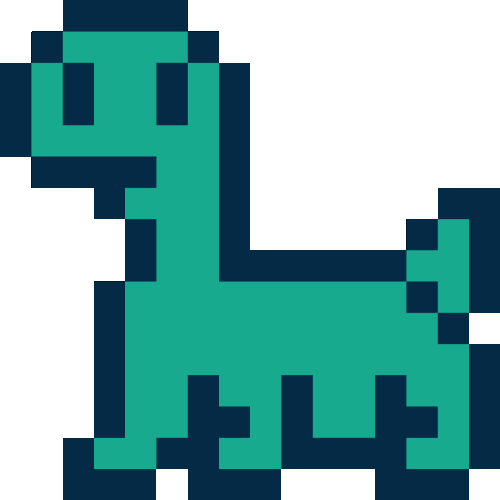
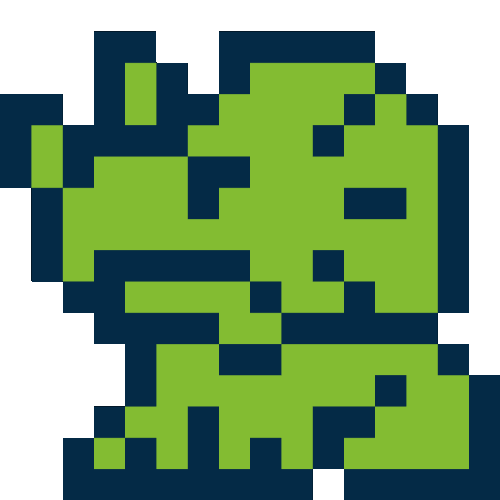






Description
Tyrannosaurus is a synonym for the most famous and fearsome large carnivorous dinosaur throughout the Mesozoic Era.
It lived in North America during the Late Cretaceous period (approximately 70 to 66 million years ago) and reached lengths of 11 to 13 meters and weighed as much as 4,500 to 8,000 kg.
Its powerful appearance earned it the name Tyrannosaurus rex or “tyrant lizard king,” and it competed with its contemporaries Carcharodontosaurus and Giganotosaurus for the title of the largest terrestrial carnivore in history.
The Largest Terrestrial Carnivore in History
Research on the ecology of Tyrannosaurus has been ongoing for about 100 years since the first fossil was discovered.
With new fossil finds and advances in analytical technology, our understanding of its appearance and behavior is being updated every day.
A Mysterious Ecology: Hunter or Scavenger?
For many years, there has been a fierce debate over whether Tyrannosaurus was a hunter that actively chased its prey or a scavenger that feasted on carrion.
A prominent theory suggests that its massive body would have made it difficult to run fast, though based on its skeleton and muscle mass, it is estimated to have been able to reach speeds of up to 20 km/h, which is still slower than a car.
In contrast, others argue that such a speed would not have been enough to catch prey like Triceratops or Edmontosaurus, and they theorize it could have reached up to 40 km/h over short distances.
A Tyrannosaurus Intimidating Its Prey
However, many scientists believe that Tyrannosaurus was an “opportunist,” performing both roles, much like modern carnivores.
It would have been difficult for it to sustain its enormous body on scavenging alone. To support its size, it needed a considerable amount of meat and is believed to have consumed up to 230 kg of meat at a time.
Unmatched Bite Force and a Destructive Diet
Any prey caught in Tyrannosaurus’s powerful jaws and sharp, large teeth would have had little chance of escape.
Analysis of excavated fossils has shown that its bite force could reach up to 5 tons, which is a mind-boggling amount compared to the average human male’s bite force (261 Newtons).
Tyrannosaurus’s biting force is predicted to have been between 35,000 and 57,000 Newtons.
It Had a Powerful Jaw and Sharp Teeth.
This overwhelming force allowed it to crush its prey’s bones.
This power is evidenced by its fossilized dung, which contains finely crushed bones, as well as bite marks left on the bones of its prey, such as Triceratops and Edmontosaurus.
Triceratops and Edmontosaurus Were Its Prey.
Prey that was bitten would either die from shock due to severe wounds or from massive blood loss.
Physical Structure and Latest Findings: Overturning Conventional Wisdom About Its Appearance
A defining feature of Tyrannosaurus was its massive head, which was about 1.5 meters long—more than 10% of its body length—and its sharp teeth, with the longest reaching 30 cm.
Some teeth, with a visible length of up to 14 cm from the gum, had serrations like a steak knife, which allowed them to easily tear through meat.
While most carnivorous dinosaurs had thin teeth, Tyrannosaurus’s teeth were so robust they could pierce bone, and if a tooth broke, a new one would grow in its place.
In contrast to its enormous head, its forelimbs were extremely short, with only two fingers.
Its Arms Were Short, and It Had Only Two Fingers.
The forelimbs were so short they couldn’t even touch each other, but it is believed that they had a certain amount of strength and may have helped it stand up from a resting position or held prey in place.
At the “Super Carnivore T.Rex” exhibition in 2016, it was suggested that it may have been able to lift about 200 kg with one hand.
Its hind limbs, characterized by strong thighs and slender shins and ankles, were a structure unique to fast-moving creatures. It is thought that younger individuals were particularly fast.
While it was once depicted dragging its tail like Godzilla, it actually walked in a nearly horizontal posture, with its head thrust forward and its long tail held straight back for balance.
It Walked in a Nearly Horizontal Posture.
Its vision was also exceptional; because its eyes faced forward, it had binocular vision, much like humans. This was well-suited for accurately judging the distance and speed of its prey. Research on its skull also shows that its brain had a highly developed visual system. Its eye sockets were narrow and vertically divided in a keyhole shape to prevent its eyes from being injured by prey.
Feathers and Facial Appearance: The Forefront of Scientific Debate
The debate over whether Tyrannosaurus had feathers is still unresolved.
Since traces of feathers have been found on related small theropods and a large 8-meter theropod (Yutyrannus), one theory suggests that juveniles, which had difficulty regulating their body temperature, may have had feathers.
A Feathered Tyrannosaurus.
According to this theory, they were covered in feathers when they were small to stay warm, but lost them as they grew to release heat.
However, a paper published in 2017 proposed that they were covered in scales.
Furthermore, the well-preserved “Dueling Dinosaurs” fossil provides direct evidence that the soles of the feet and other parts were covered in reptile-like scales.
In recent years, a new theory has gained significant attention, suggesting that Tyrannosaurus had lips covering its teeth, overturning the image of its ferocious face.
A study published in 2023 pointed out that the enamel on its teeth was thin, and if its teeth were exposed like a crocodile’s, they would have dried out and become damaged.
Instead, the study concludes that it is highly likely that its teeth were covered by thin, scaly lips, similar to a modern monitor lizard, to keep them moist.
Growth, Lifespan, and Social Behavior: Surprising Aspects
A dinosaur’s age can be estimated by examining the growth rings in a cross-section of its fossilized bone.
The lifespan of a Tyrannosaurus is estimated to be around 30 years.
When they hatched from the egg, they were only about 60 cm long and weighed just 2 kg.
However, it’s believed that 60% of individuals died by the age of two, indicating a very high juvenile mortality rate.
Survivors are thought to have gained about 2.1 kg per day during a growth spurt between the ages of 14 and 18, putting on 3,000 kg in just four years.
Fossil evidence also shows that as they approached 30, many individuals suffered from injuries and joint diseases.
Whether Tyrannosaurus was a solitary hunter or hunted in packs has also been a subject of long debate.
Bone beds where multiple tyrannosaur fossils were found together have been discovered in Canada and the United States, providing strong evidence that they may have lived in groups.
Tyrannosaurus may have built a sophisticated social structure, much like wolves, where experienced adults led and taught the younger ones how to hunt.
Evidence of cannibalism has also been inferred from bite marks left on fossils.
In particular, traces have been found that suggest the bites occurred while the dinosaur was still alive, indicating that cannibalism was a regular occurrence.
According to a 2021 paper, the population density of Tyrannosaurus was estimated to be one per 6-kilometer radius, suggesting that about 20,000 individuals existed at any given time across all of North America.
Calculations also suggest that a total of 2.5 billion individuals existed over a period of about 2 to 3 million years, speaking to its immense success.
Discovery of New Species and Taxonomic Shifts
For a long time, the genus Tyrannosaurus was thought to contain only a single species, rex, which is why the name “Tyrannosaurus rex” or its shorthand “T-Rex” is so widespread.
However, in 2022, a theory was proposed that the genus should be split into three species—Tyrannosaurus rex, Tyrannosaurus regina, and Tyrannosaurus imperator—based on differences in skeletal robustness and tooth shape.
While this theory has been met with much debate, it sparked an interesting discussion about the individual variations that existed within Tyrannosaurus.
Then, in 2024, a new species was formally described based on a fossil discovered in New Mexico, USA: Tyrannosaurus mcraeensis. This was a major headline.
This new species is believed to have appeared about 6 to 7 million years earlier than Tyrannosaurus rex, making it a crucial discovery for unraveling the mystery of Tyrannosaurus’s evolution.
Valuable Fossil Specimens: “Sue” and “Dueling Dinosaurs”
Dozens of Tyrannosaurus fossils have been found to date, but none are considered a complete specimen.
However, the Field Museum in Chicago, USA, displays “Sue,” known as the most expensive dinosaur skeleton in history.
Purchased at auction for about 900 million yen in 1997, Sue is a valuable specimen that helps us understand the appearance of Tyrannosaurus today.
Also, the “Dueling Dinosaurs” specimen, a fossilized Tyrannosaurus intertwined with a Triceratops, boasts an astounding preservation rate of nearly 100% skeletal completeness.
Research on this fossil is still ongoing, as it has the potential to settle the long-running debate over whether the small tyrannosaurid “Nanotyrannus” was a separate species or simply a juvenile Tyrannosaurus.